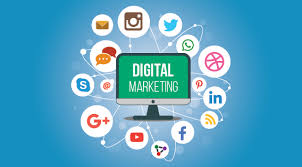.introduction
Digital Marketing
In today’s highly competitive digital landscape, small businesses must leverage effective digital marketing strategies to stand out from the crowd and reach their target audience. With the right approach, digital marketing can level the playing field and provide immense opportunities for growth and success. In this blog, we will explore some proven digital marketing strategies that can help small businesses maximize their online presence and achieve their marketing goals.
Define Your Target Audience
Before diving into any digital marketing strategy, it’s crucial to clearly define your target audience. Understanding your audience’s demographics, interests, and online behavior will enable you to create more targeted and personalized marketing campaigns. Conduct market research, analyze customer data, and use tools like Google Analytics to gain valuable insights into your audience.
Build a Professional Website
A website is the foundation of your online presence. Ensure that your website is well-designed, mobile-friendly, and easy to navigate. It should clearly communicate your brand message, provide relevant information about your products or services, and include clear calls-to-action. Optimize your website for search engines (SEO) to improve its visibility and organic traffic.
Search Engine Optimization (SEO)
SEO plays a vital role in driving organic traffic to your website. Research and implement relevant keywords throughout your website’s content, meta tags, and headings. Create high-quality, original content that provides value to your target audience and encourages them to engage and share. Focus on building quality backlinks from reputable websites to enhance your website’s authority and visibility in search engine rankings.
Pay-Per-Click Advertising (PPC)
PPC advertising, such as Google AdWords or social media ads, can be a cost-effective way to target specific keywords and demographics. Develop a well-researched keyword strategy and create compelling ad copies to drive traffic to your website. Set a budget that aligns with your goals and continuously monitor and optimize your campaigns to maximize ROI.
Online Reputation Management
Monitor and manage your online reputation to build trust and credibility. Respond promptly to customer reviews and feedback, both positive and negative. Encourage satisfied customers to leave reviews and testimonials, and address any issues or complaints in a professional and timely manner.
Video Marketing
Video content has become increasingly popular and can effectively capture your audience’s attention. Create engaging and informative videos that showcase your products or services, provide tutorials, or share valuable insights. Publish videos on platforms like YouTube, Vimeo, or social media channels to increase brand visibility and drive engagement. Incorporate videos into your website and email marketing campaigns for maximum impact.
Influencer Marketing
Influencer marketing can be a powerful strategy to expand your reach and build trust with your target audience. Identify influencers who align with your brand values and have a significant following within your niche. Collaborate with them to create sponsored content, product reviews, or giveaways. Leveraging the influence and credibility of these individuals can help you gain visibility and attract new customers.
Mobile Optimization
With the increasing use of smartphones, optimizing your digital marketing strategies for mobile devices is crucial. Ensure that your website is responsive and loads quickly on mobile devices. Implement mobile-friendly email templates and consider mobile advertising formats. Mobile optimization enhances the user experience and improves your chances of converting mobile visitors into customers.
Analytics and Data-driven Decision Making
Utilize analytics tools to measure the effectiveness of your digital marketing efforts. Track key metrics such as website traffic, conversion rates, email open rates, and social media engagement. Analyze this data to identify trends, strengths, and areas for improvement. Make data-driven decisions to optimize your strategies and allocate resources effectively
Audit your current content
Next, do an audit to assess existing assets and identify content gaps or opportunities. This helps prioritise topics that align with the objectives and audience interests you’ve defined. Consider your budget, time, and expertise, and plan accordingly. If resources are limited, focus on creating high-quality evergreen content that provides long-term value. It will feel more feasible than producing daily blog posts or videos.
Meet your customers where they are
Another step is to determine the channels and platforms where your target audience is most active. Whether it’s social media, email newsletters, blog posts, or video content, choosing the right channels ensures maximum reach and engagement. Be organised and establish a content calendar to maintain consistency and ensure a steady flow of content. This helps avoid sporadic posting and keeps the audience engaged over time.
Conclusions
To succeed in small business digital marketing, it’s essential to grasp and implement key strategies. This includes leveraging SEO to drive organic traffic, creating engaging social media ads, and sending personalized email campaigns. These tactics help increase your brand visibility, attract potential customers, and boost sales. However, simply knowing these strategies is not enough; you must consistently apply them, experiment with various approaches, and adapt based on your audience’s preferences. Continuously testing and refining your marketing efforts is key to long-term success and maximizing ROI in a competitive online environment.

